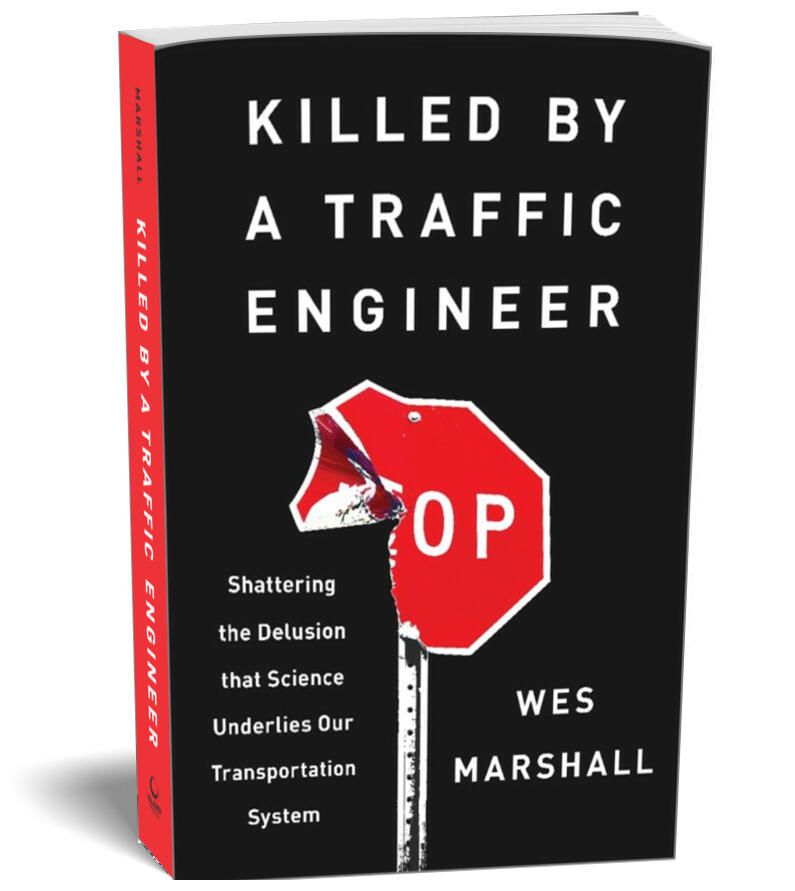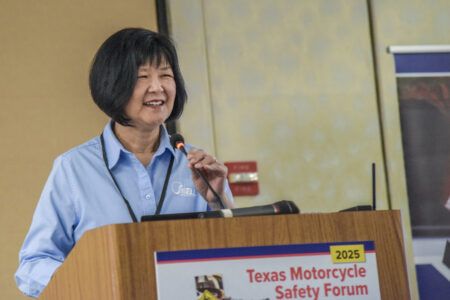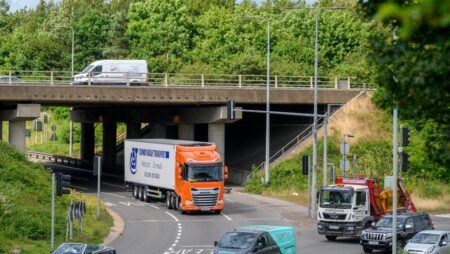Professor Wes Marshall is blowing the lid off traffic engineering in his new book, by questioning its very foundations. Here he shares some of what was uncovered in his research into the history of the discipline; his hopes for the future; and the possibility of building roads that are safer by design
If we need to constantly remind people in the transportation system to be safe, is it really a safe transportation system?” This provocative question is at the heart of Wes Marshall’s book, Killed by a Traffic Engineer, which challenges the foundations of modern road design and traffic management.
Human error is often cited as the leading cause of crashes; when a crash occurs it is usually said that someone did not follow the rules of the road… they were not being ‘safe’. But if the design of the road is such that the rules are incredibly difficult to follow, is the design really safe in the first place?
Despite its eye-catching title, the book isn’t about shifting blame but rethinking assumptions that have guided the field for a century. Marshall speaks to TTi from his university office, the window behind him showing a busy, well-kept freeway with cars blinking back the morning sun as they speed past. This freeway seems to be operating effectively and meeting the needs of citizens, following design standards built up over decades, so surely it is well designed? Not necessarily. In his book Marshall, himself a traffic engineer, argues that going back to the drawing board and rethinking existing guidance could in fact save lives.
“What made me angry was that the stuff I was taught, I just assumed was steeped in 100 years of safety research; that this was all making our roads safer,” he explains. “When I started digging down some of those rabbit holes, it just wasn’t true. There wasn’t safety embedded in that kind of stuff.”
“I’m not blaming traffic engineers,” he adds. “I’m saying we were doing what we were taught, but that isn’t what we think it is. It’s not as scientific as we were ever led to believe.”
Where did it all begin?
The AASHTO Green Book, the USA’s guide to highway and street design, began as an effort to standardize practices across states. “They were trying to make sure we didn’t have green stop signs in one state and purple in another,” Marshall says.
This laudable project started in pamphlet form and grew into the comprehensive manual of today. But when Marshall looked up the original studies behind many design standards, he was surprised by how thin some of the evidence was. “When you look at some of the things we do, you have to dig down pretty deep to find the initial studies,” he says. “You’re like, ‘Wait a second, that’s the study? That’s why we do it that way?’”

Sometimes flimsy research has been compounded over the years by the fact that better solutions can feel counterintuitive. For example, while engineering intuition suggests wider lanes are safer because they provide more space, the data doesn’t support this.
“It would be the case if we humans behaved the exact same way on both of those streets,” says Marshall. “When you put a wider road in front of humans, we behave differently. We start driving faster.”
New data reveals that wider lanes often lead to more dangerous conditions.
Surprisingly, the original studies from the 1920s and 30s only examined roads up to 24ft wide curb-to-curb – narrower than many modern roads. “Maybe 24ft is safer than 18ft,” says Marshall. “It doesn’t mean that 60ft, 80ft or 120ft is safer than 30ft.”
Rethinking highway design
In his book, Marshall suggests a number of ways to remedy the problem of badly engineered roads, including a fundamental rethink of the current approach to street design. “The way I was taught to design a street is you start from the center line,” he says. “You figure out how much space we need to give to cars, and you start working your way out. At the end of the day, whatever’s left over, we give to pedestrians; and sometimes it’s nothing. If we put our money where our mouth is, we’d design from the outside in. How much space do the pedestrians need? How much space do we need for bicyclists and transit? Whatever’s left over could go to cars.”
This approach reflects the upside-down pyramid of transportation priorities that many cities claim to follow – pedestrians first, then cyclists, transit, freight, and finally cars – but rarely implement in practice.
Another problem Marshall identifies is the focus on ‘level of service’ – a measure of how efficiently traffic flows through a system, which often extends to catering for predicted future service requirements. “I was taught that if we do this, things will be safer,” he says.
But when he investigated the origins of level of service standards, Marshall found a haphazard history, with a handful of people trying to study congestion at a time when it really wasn’t a problem, and using straw polls to try to establish what would be required.
“We were doing what we were taught, but that isn’t what we think it is”
While early specifications mentioned adding safety to these standards, subsequent iterations removed those requirements. “We never added safety to it,” says Marshall. “If we actually look at the way we’re focused on these traffic impact assessments… that sort of stuff is making our roads less safe.”
Marshall is hopeful for the future but believes traffic engineering needs to embrace a more scientific approach. “Doctors have been around for 5,000 years, but for the first 1,000, you could argue that they were killing more than they saved,” he says. “Traffic engineering is only 100 years old. We’re still in the stage where we’re killing more people than we save. The problem is we don’t know it. We think we’re this fully-fledged science.”
Drawing inspiration from Donald Shoup’s work on parking regulations, Marshall advocates for more empirical rigor. “Doctors do trials, test different drugs, figure out what happens, and they get better and better, slowly but surely. We need to do that to get better.
“Thirty years from now, we could look at this time as the Dark Ages of transportation engineering. When I look at what we’re doing and why, it feels like that’s true. We can do better. That’s the bottom line.”
ABOUT WES MARSHALL
Wes Marshall, PhD, PE, is a professor of civil engineering at the University of Colorado Denver, where he holds a joint appointment in urban planning. He plays a pivotal role as director of the CU Denver Human-Centered Transportation program and the Transportation Research Center at CU Denver. Marshall focuses on transportation teaching and research dedicated to creating safer and more sustainable transportation systems. He is a recipient of the Eisenhower Transportation Fellowship, Australia’s Endeavour Fellowship, and the Transportation Research Board’s Wootan Award for the outstanding paper in policy and organization.
Podcast Extra
Listen to the full version of this interview in Episode 48 of the Transportation Podcast from Traffic Technology International
This interview was first published in the May 2025 edition of TTi magazine





